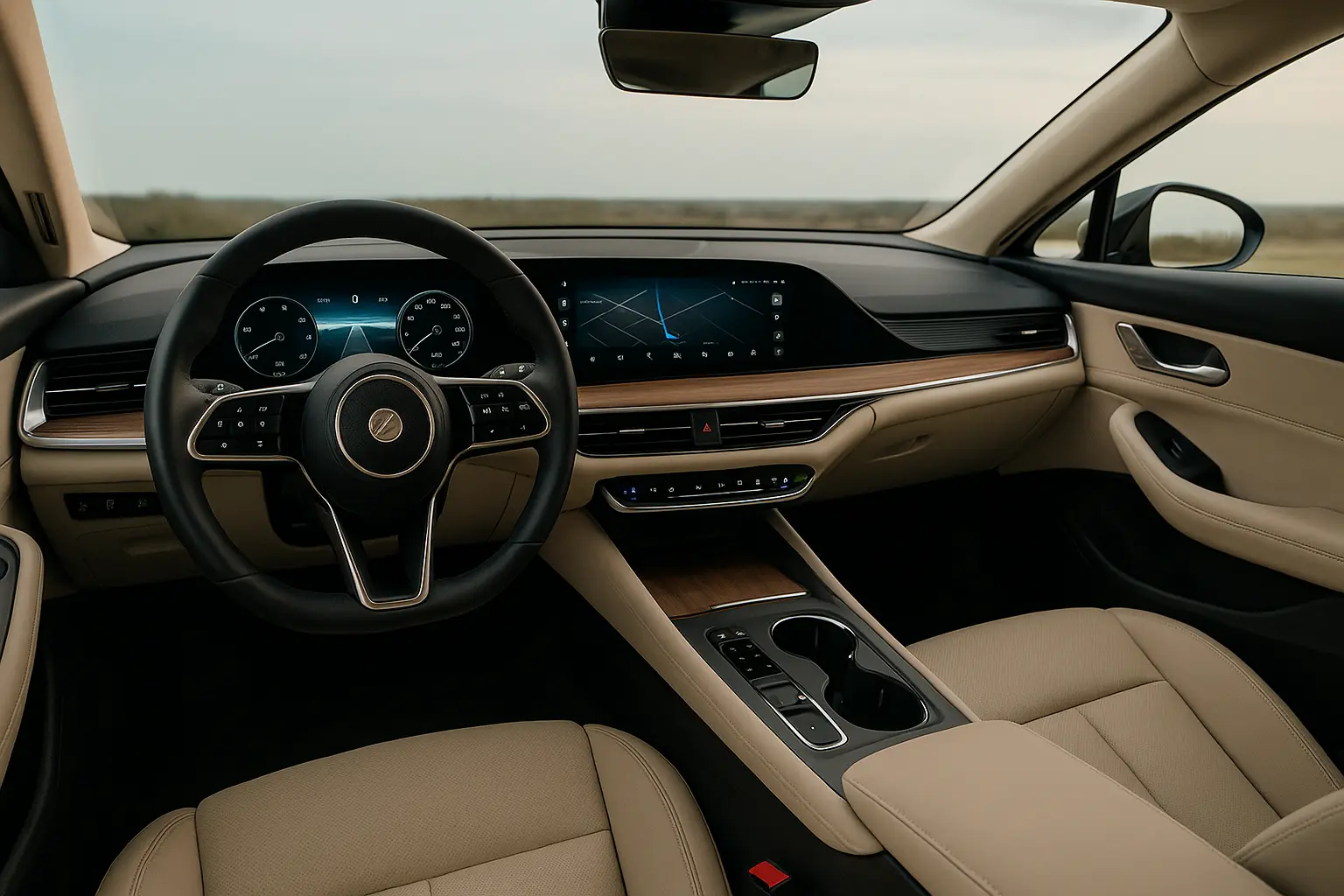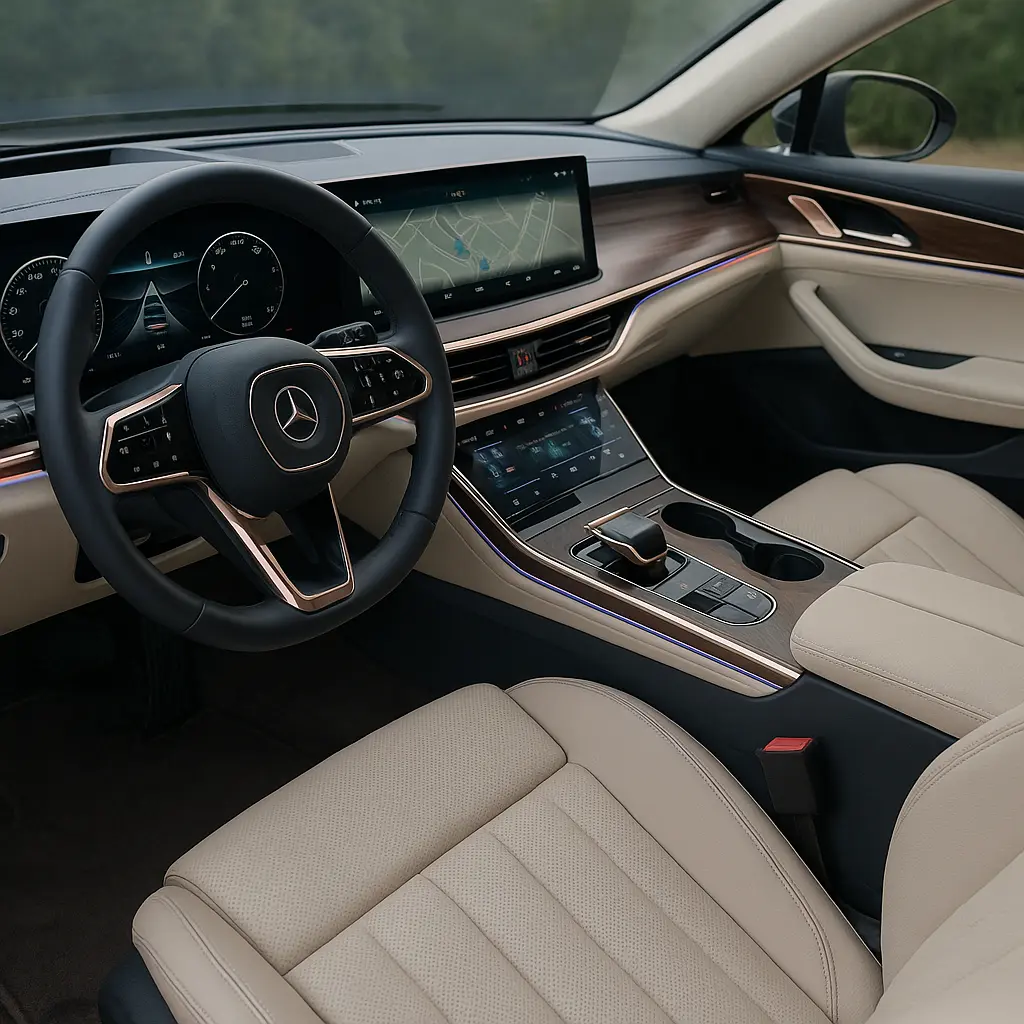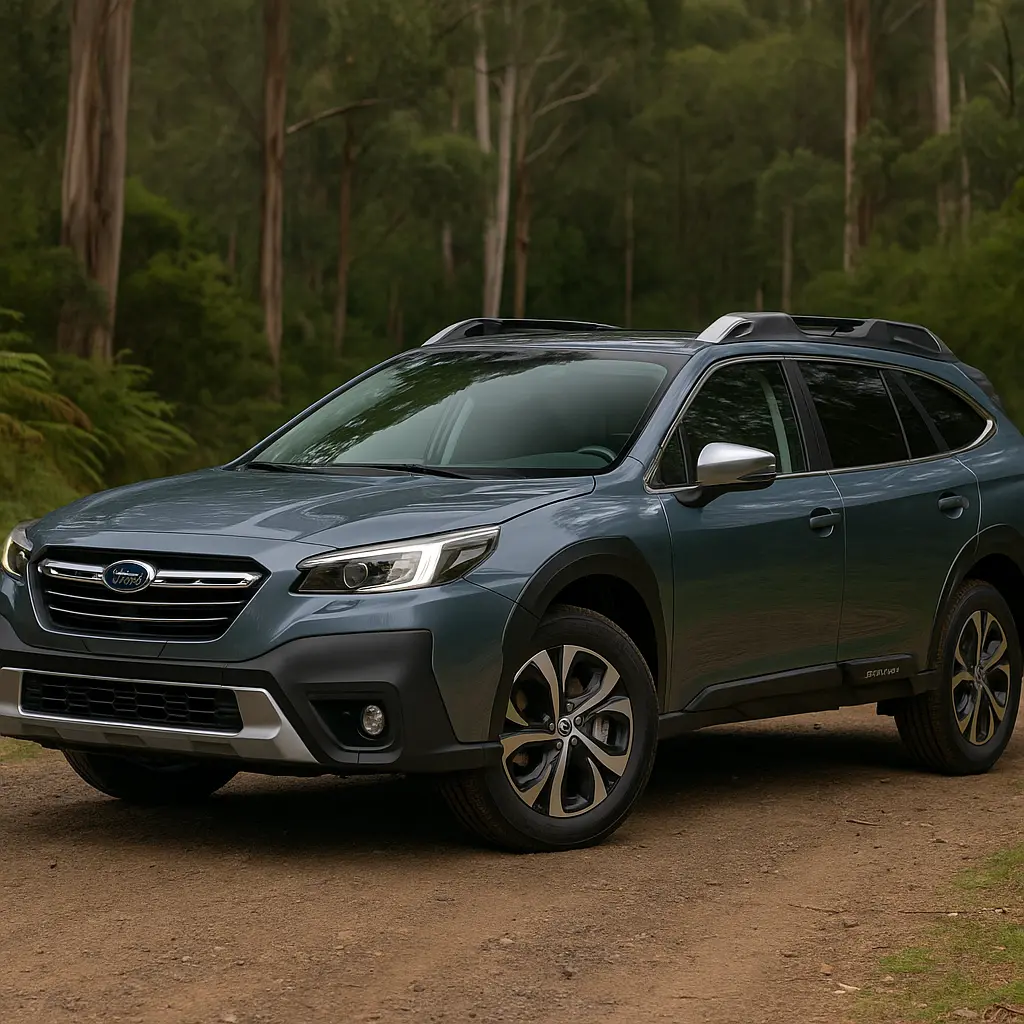In 2025, Australian car buyers are no longer looking at a vehicle’s performance and fuel economy alone — interiors have become just as critical in the buying decision. Automakers are transforming cabins into luxurious, high-tech, and sustainable living spaces on wheels. From ultra-premium leather seats with massage functions to fully customisable ambient lighting and AI-powered infotainment systems, the latest car interiors are redefining comfort, convenience, and style.
What’s driving this change? Firstly, global competition between brands is fiercer than ever. With electric vehicles (EVs) becoming mainstream, the absence of noisy engines means carmakers are finding new ways to differentiate themselves. Secondly, consumer expectations have shifted. Today’s buyers expect their cars to function as mobile offices, entertainment hubs, and personal retreats. Finally, technology and sustainable manufacturing innovations have opened the door for features that were once only possible in concept cars.
This article explores the most unique and luxurious car interiors available in 2025, highlighting the design philosophies, materials, and technologies shaping Australia’s automotive future.

The Shift Towards Bespoke Luxury
The trend toward customisation is stronger than ever. Brands like Bentley, Rolls-Royce, and Lexus are allowing Australian buyers to select everything from the stitching pattern on seats to the type of wood inlays used in the dashboard. This personalisation creates a sense of exclusivity — no two interiors are exactly alike.
Customisation now extends beyond high-end luxury brands. Even mainstream automakers such as Hyundai, Mazda, and Kia are introducing higher trim levels with personalised interior options. Buyers can choose contrasting seat colours, unique dashboard finishes, and trim packages that reflect their personal style.
In the EV segment, Tesla, Lucid, and Polestar are focusing on minimalistic yet premium aesthetics, with sustainable materials taking centre stage. Vegan leather, recycled plastics, and responsibly sourced wood veneers are becoming a common sight, making eco-conscious buyers feel both indulgent and responsible.
Technology as the New Luxury
Gone are the days when wood and leather alone defined a luxury interior. In 2025, technology is a core part of the luxury experience. Some standout trends include:
Augmented Reality Dashboards
Head-up displays (HUDs) now go beyond speed readings. Augmented reality (AR) overlays navigation arrows directly onto the road, highlights hazards, and even identifies points of interest. Brands like Mercedes-Benz and BMW are leading the way with full-width AR displays.
AI-Powered Infotainment
Voice assistants have evolved from simple command recognition to intelligent driving companions. Systems can now predict your destination based on patterns, recommend nearby cafés, or adjust cabin temperature without manual input.
Ultra-Responsive Touch Panels
Capacitive touch panels are replacing traditional buttons, offering a cleaner design and customisable layouts. Many vehicles now feature haptic feedback for a tactile, button-like feel without physical switches.
Immersive Audio Systems
Premium brands like Bang & Olufsen, Burmester, and Mark Levinson are delivering theatre-quality sound systems, with speakers integrated into headrests and door panels for a surround-sound experience.
Full Cabin Connectivity
With 5G networks integrated into vehicles, streaming movies, hosting video calls, or even gaming on the go has become seamless. Some interiors now feature dedicated gaming stations for rear-seat passengers.
Material Innovation – Luxury Meets Sustainability
Sustainability is no longer a niche selling point; it’s a necessity. In 2025, car interiors are showcasing eco-friendly innovation without compromising on luxury.
Vegan Leather Alternatives
High-end alternatives like Ultrafabrics and Desserto cactus leather are replacing traditional animal hides. These materials are durable, breathable, and available in a wide range of colours.
Recycled & Renewable Materials
Reclaimed wood veneers, ocean plastic fabrics, and recycled aluminium trim are making luxury cars more environmentally responsible. Volvo and BMW are pioneers in integrating these materials across their line-ups.
Natural Fibres
Wool blends, bamboo, and organic cotton are being used for seat upholstery, carpets, and headliners, offering a soft, premium feel while reducing environmental impact.
Comfort Beyond Compare
While style and sustainability are important, comfort remains king in luxury interiors. Manufacturers are incorporating wellness-focused features, including:
- Adaptive Seating – Seats that automatically adjust for posture support during long drives.
- Massage & Climate Control – Multi-zone heated and ventilated seats with various massage modes.
- Noise-Cancelling Cabins – Active sound suppression for a peaceful ride, especially in EVs.
- Customisable Ambient Lighting – LED systems with millions of colour options, synced to music or driving mode.
The Rise of “Lounge-Style” EV Cabins
Electric vehicles are changing cabin layouts entirely. Without large engine compartments and transmission tunnels, EV designers are rethinking space.
Flat Floors & Open Space
Cars like the Hyundai Ioniq 6 and Mercedes EQS use flat floor architecture to create open, airy cabins.
Swivel Seats
Some EVs now feature rotating front seats, turning the cabin into a lounge when parked.
Integrated Workspaces
Fold-out desks and laptop holders cater to remote workers who use their car as a mobile office.
Global Inspiration Meets Local Taste
Australian car buyers are increasingly influenced by global design trends but still prefer practical touches for local conditions. For example:
- Durable Upholstery – Materials that handle beach sand and heat well.
- Advanced Climate Systems – Efficient cooling for hot summers, with ventilated seats becoming a must-have.
- Panoramic Sunroofs – Providing light-filled interiors while still offering UV protection.
Standout Models with Unique Interiors in 2025
Mercedes-Benz EQS – A futuristic hyperscreen dashboard spanning the width of the car, paired with luxurious materials and ambient lighting.
Bentley Bentayga EWB – Airline seat specification with 40° recline, footrests, and climate-controlled massage seats.
BMW i7 – 31-inch theatre display for rear passengers, Swarovski crystal interior accents, and a minimalist yet opulent design.
Lucid Air – Eco-friendly interior materials, massive glass canopy, and a driver-focused cockpit.
Rolls-Royce Spectre – Starlight headliner, custom embroidery, and fully bespoke cabin options.
Hyundai Ioniq 6 – Sustainable materials with an airy, modern design, proving eco-conscious can still be premium.
Why Interior Design Matters for the Future
As autonomous driving technology progresses, interiors will become the most important aspect of vehicle design. The focus will shift from driving dynamics to passenger experience. A car’s ability to provide comfort, entertainment, and wellness features will define its market success.
For Australian buyers, the 2025 selection proves that luxury no longer comes at the cost of sustainability. The fusion of high-end comfort, cutting-edge tech, and eco-friendly innovation marks a turning point in automotive history.
Final Thoughts
From hand-stitched leather in ultra-luxury sedans to eco-conscious minimalism in EVs, 2025 has something for every taste. Australian buyers can now enjoy interiors that are as unique and expressive as the people driving them. Whether you value technology, sustainability, comfort, or pure style, the latest cabins prove that the future of driving is as much about the journey inside the car as it is about the road ahead.
Leave a comment
Your email address will not be published. Required fields are marked *




















